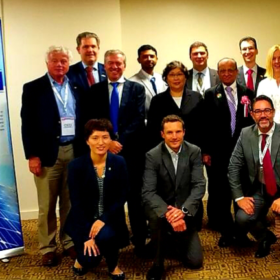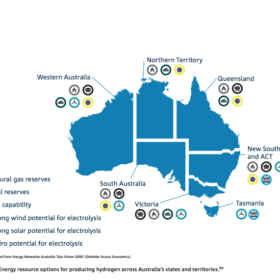Industry urges policymakers to catch up with technology at COP24
The Global Solar Council has released a 15 point plan, which is largely policy focussed, alleging that the industry has down its homework to slash the costs of solar. Now its policies turn to even the playing field. In a similar effort, the World Future Council has announced that it will launch a new platform for policymakers and the industry to enable an ongoing dialogue.
IRENA clarion call for G20 leaders may fall on deaf ears
In an advisory requested by Argentinian hosts, agency reports on the role solar can play in firing the energy transition up to 2050 – but was anybody listening?
UAE makes another $50m in RE loans available
The seventh round of funding under the Abu Dhabi Fund for Development program takes to US$350 million the amount pumped into clean energy as part of state-run energy transition strategies in the developing world.
IRENA and southeast Asian nations pledge action on PV
The International Renewable Energy Agency wants to unlock the PV potential of the Asia-Pacific region with technical and planning support. It says a better flow of knowledge is needed to close the gap on a regional aim of generating 23% of energy from renewables by 2025.
World reacts to IPCC report
A snapshot of how politicians, scientists, institutions, industry, and civil servants have reacted to the Intergovernmental Panel on Climate Change (IPCC) report, released yesterday.
Egypt could reach 44 GW of solar by 2030 – IRENA
In its report, Renewable Energy Outlook: Egypt, the International Renewable Energy Agency (IRENA) envisages a scenario in which solar becomes the second largest energy source in the country, after gas. If current plans and RE strategies are maintained, however, just 9 GW will be installed by 2030, compared 44 GW. The agency recommends a series of actions to achieve a 2030 renewable energy target of 52%.
Global Solar Council announces new board, mission
The Global Solar Council (GSC) held its general assembly at last week’s Solar Power International (SPI) in California, where it announced new board members and said it will work towards crafting a unified message for the solar industry. All five working committees of the council are expected to contribute to this new task.
Japan auctions 197 MW in second PV tender
The Japanese Government has wrapped up its second of three planned solar auctions, with nine companies winning the rights to build a total of 196.96 MW of commercial PV capacity.
Australia has big hydrogen export opportunity
Low emissions hydrogen offers significant exporting potential for Australia, and could contribute AU$1.7 billion to domestic economy annually, shows a new report released by the Australian Renewable Energy Agency (ARENA). A separate briefing paper released by the Australian government’s Chief Scientist, Dr Alan Finkel, describes hydrogen as Australia’s next multibillion dollar export opportunity.
Japan’s PV sector should focus on future energy mix target — report
The Japanese PV industry should respond to the government’s recent decision to leave its 2030 energy mix targets unchanged by pushing for a higher share of solar in the next version of the country’s strategic energy plan, according to a new report.










